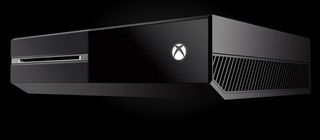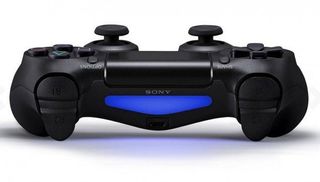What can the PC learn from the new generation of console hardware?

We don't like to get too partisan here on PC Gamer - let's face it, our allegiances are pretty clear. Not to mention the fact that no-one can deny that console gaming has had a particularly terrible couple of weeks. Who'd have thought that the still primarily discs-and-retail focussed platform would be the one the kill the concept of ownership dead?
But looking beyond Microsoft's actually-worse-than-Apple approach to digital ownership, has there been anything released so far about the generation of under-telly hardware that we can learn from over here in PC-land? Below is our e attempt to look past Microsoft's spectacular XBone goals and see if there's anything in the new machines worth emulating in all this talk about powerful cloud computing, GDDR 5 RAM and one-touch share controls.
Harnessing the Cloud
How's this for a bold claim? Jeff Henshaw, group program manager of Xbox Incubation and Protyping told OXM the following regarding the Xbox One's cloud gaming potential: "For every physical Xbox One we build, we're provisioning the CPU and storage equivalent of three Xbox Ones on the cloud," he said. "We're doing that flat out so that any game developer can assume that there's roughly three times the resources immediately available to their game, so they can build bigger, persistent levels that are more inclusive for players."
Even if this is literally the case, it's very unclear what this will mean in practise, since there's a pretty long list of caveats when it comes to what is and isn't appropriate for remote processing. Microsoft's Matt Booty has acknowledged this, of course, citing volumetric fog and lighting as things that the cloud would be appropriate to handle (yes, the cloud could be used to render prettier clouds): "Those things often involve some complicated up-front calculations when you enter that world, but they don't necessarily have to be updated every frame. Those are perfect candidates," he explained.
It's all very suspect, for now, and there's been very little discussion regarding that most limiting of factors: the speed of the end user's internet connection. To be blunt, Microsoft's cloud claims are dubious, and there's the worrying feeling that the hardware manufacturer is trying to compensate for Sony's superior specs (more of which below). Nonetheless, we all know that the Cloud has the potential to revolutionise PC gaming. And at least, in rhetorical terms, Microsoft's new console is leading the push.

GDDR5
So it turns out that the XBone and PS4 are closer to being PCs in boxes than ever, not least because of their use of X86 architecture. This should make porting easier (with one potential caveat, mentioned below). In terms of raw power, however, the new machines aren't quite the great leap forward those of you who feel game development has been held back by the PS3 and 360's modest system specs might have hoped for.
That said, in one very specific way Sony's specifications do make us look a bit forlornly at our rigs, and that's the presence of 8 gigs of GDDR5 system memory in every machine. Chances are you've already got some GDDR5 in your GPU, but it's DDR3 you're likely to have plugged into your motherboard.
PC Gamer Newsletter
Sign up to get the best content of the week, and great gaming deals, as picked by the editors.
Why does this matter? Well, GDDR5 has higher latency than DDR3, but superior bandwidth. The advantages this will offer over the DDR3 found in XBone (and your rig) aren't entirely clear at this point - and it's worth remembering that that's 8 gigs of unified memory that will need to be split between tasks. Still, GDDR5 presence as system memory in PS4 might hurry along its adoption by PC hardware manufacturers.

New Input devices
Every Xbox One ships with Kinect and needs the device to function. This is, of course, an Orwellian nightmare. Especially since the NSA seems to have an all-access pass to Microsoft's servers. Thankfully, MS backtracked from its initial, "Kinect is always-on" position, and recently confirmed that the device can be entirely shut down when you don't want to use it.
Privacy concerns aside, it's worth considering what the presence of a motion and voice sensing input as standard could mean for game design. Kinect was a bit of a dismal failure, really, mostly due to technical limitations, but also due to the fact that publishers couldn't afford to waste resources weaving connect functionality into games targeted at sections of the player base who hadn't bought one.
XBone should solve that problem, allowing voice controls to be smoothly integrated into gameplay. Gestures too, of course, but once a game demands you start clearing space we're not sure that counts as smooth integration anymore. If Xbox One games /do/ rely heavily on Kinect, of course, porting could become tricky.
All three consoles have a second (touch)screen option too, of course: Wii U's tablet controller, PS4's symbiotic relationship with the Vita, and MS' Smartglass. We haven't seen anything to rival the functionality of keyboard with any of these devices, but there's no denying that the platform holders are aggressively experimenting with inputs.

Social Integration
The PS4's Share button is a devilishly clever feature, combining video streaming and social network functionality into a single button press. Tweeting video clips or posting screenshots to the PS4's integrated social network is the obvious functionality, but Sony has built-in gameplay streaming too courtesy of a partnership with UStream. The Wii U, meanwhile, has the utterly charming Miiverse - an integrated social network that connects people playing the same games and allows them share screenshots, post tips, or ask for advice.
Strictly speaking, there's nothing here we can't already do on PC, but solutions often require third party software and vary between to games. Given the rise of Let's Plays on YouTube, Sony's seemingly seamless integration of video sharing is something that platforms such as Steam will surely be eyeing. There's obvious appeal here to those who absolutely love talking about themselves but lack any technical nous whatsoever. We suspect that's a large demographic.
Those are a few ideas from what we know of the next generation of console hardware at the moment. It's clear that the next gen telly-boxes could probably learn a lot more from our platform than vice versa. Is there any console tech you'd steal? What aspects of PC gaming would you like to see become more prevalent?
Most Popular




